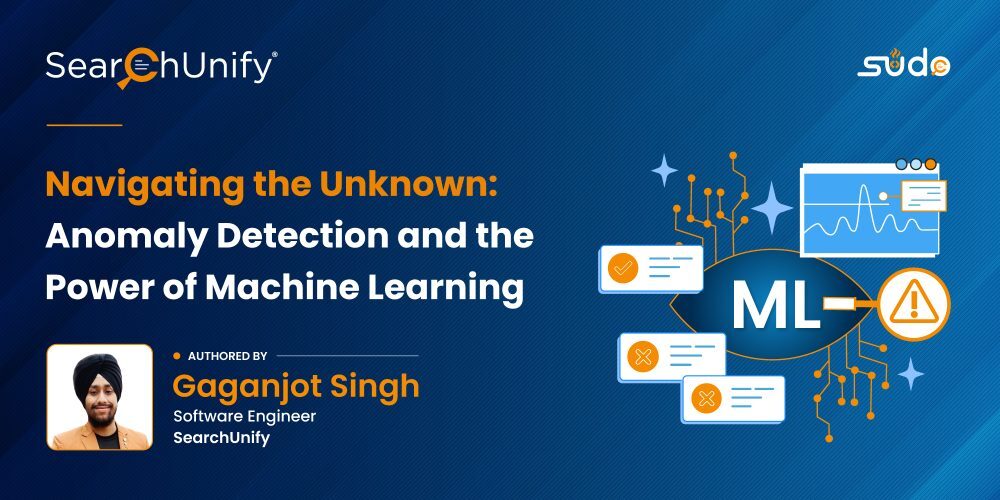
Did you know that the anomaly detection market is expected to register a CAGR of 15.3% and surpass USD 5 billion by the end of 2026.
Amidst the ebb and flow of customer interactions, Anomaly Detection is like a watchful guardian. It’s there to spot and tackle potential problems before they become big issues.
Recent market studies reveal something impressive—refined by cutting-edge technologies like AI and Machine Learning, businesses can quickly and accurately notice when things don’t follow the usual pattern. This means better decision-making, less risk of data problems, and, in the end, more growth in the market.
This all points to the growing recognition of using anomaly detection as a proactive strategy to identify and resolve issues before they can adversely impact the customer experience.
But, before we dive into the details of how it works, let’s start with the basics.
What is Anomaly Detection?
As the name suggests, Anomaly detection tirelessly monitors for anomalies and deviations from established norms that could signal impending issues. By proactively identifying these anomalies, anomaly detection empowers customer support teams to intervene promptly, averting potential crises and ensuring seamless customer experiences.
To put it even more easily:
- Finding the Different Stuff: Anomaly Detection is good at finding things that don’t fit in your data, like finding a cat in a group of dogs.
- Early Warning System: It’s like a warning system. If something strange happens, Anomaly Detection tells you, “Hey, take a look at this!”
- Helps Make Smart Choices: By catching these odd things early, businesses can make better choices. It’s like having a super-smart friend who always gives good advice.
Take a look at the image below, where the scooter stands out as an anomaly amidst a fleet of cars.

Let’s Take an Example
Now, imagine “TechSolve Solutions,” a software company, experiencing an unexpected surge in support tickets from a specific customer segment. Ordinarily, this could be a cause for concern, but with the implementation of anomaly detection tools, the support team at TechSolve Solutions can quickly pinpoint the anomaly and the reason for it.
Further analysis reveals that “InnovationTech Pro,” a particular product from TechSolve Solutions, which previously had minimal support requests, is now generating a disproportionate number of inquiries. By detecting this anomaly early on, the support team can investigate the root cause, identify potential issues with InnovationTech Pro, and swiftly address customer concerns.
The result? Averted customer dissatisfaction, saved resources, and a strengthened reputation for the company’s commitment to customer satisfaction.
But how do organizations find needles in a haystack—identifying those data points that exhibit irregular behavior?
Machine learning empowers this process by enabling systems to learn and recognize both normal and anomalous behavior.
The Crucial Role of Machine Learning in Anomaly Detection
Machine learning (ML) sits at the heart of anomaly detection, acting as a powerful engine that sifts through data, uncovers hidden patterns, and flags deviations from the norm. Here’s how:
- Pattern Recognition: ML algorithms are like skilled observers, scanning data for recurring patterns and characteristics. They learn the “usual suspects” – the typical behavior of your data – and anything that deviates significantly from this established norm gets flagged as a potential anomaly. Think of it like noticing a stranger lurking in your neighborhood who doesn’t seem to belong.
- Model Building (Supervised Learning): When you have labeled data, where anomalies are already identified, ML can build predictive models. These models learn from past encounters with anomalies, allowing them to proactively identify similar patterns in new, unlabeled data. Imagine training a dog to sniff out explosives based on past experience – the more training data, the sharper the detection skills.
- Unlabeled Data Exploration (Unsupervised Learning): But what if you don’t have labeled data? Don’t worry, ML has tricks up its sleeve! Unsupervised learning algorithms can still find anomalies by analyzing the inherent structure of the data. They identify data points that don’t fit the established clusters or patterns, like finding the odd one out in a lineup. Think of it like sorting a pile of coins – the counterfeit ones stand out because they don’t match the weight and size of the real ones.
- Adaptability: The beauty of ML is its constant learning. As new data comes in, ML models can adapt and refine their understanding of normality, improving their ability to detect anomalies over time.
- Scalability: The data deluge is no match for ML! With its ability to handle massive datasets efficiently, ML makes real-time anomaly detection a reality. Imagine monitoring millions of financial transactions in real-time, where even the slightest deviation could spell trouble. ML scales up to the challenge, making the world a safer and more secure place.
Types of Anomaly Detection
- Point Anomalies
They involve identifying individual instances within a dataset that significantly deviate from the established norm.
Within a case routing system, a point anomaly could surface when one agent continuously receives a significantly higher volume of cases, even when comparable agents with relevant expertise remain underutilized. This pattern flags an irregular assignment process that requires investigation and potential adjustments to ensure proper workload distribution and efficiency.

- Contextual Anomalies:
Contextual anomalies arise when deviations are observed based on specific contexts or conditions.
In a customer support system, a contextual anomaly may emerge when an unforeseen surge in support tickets occurs in January. This unexpected spike could be attributed to alterations in tax policies that directly impact a company’s users during the transition from December to January.
- Collective Anomalies:
Collective anomalies involve patterns of deviations that become apparent only when analyzing the entire dataset or a group of related instances.
In a cybersecurity context, a collective anomaly could manifest as a network security breach. While individual activities such as increased data transfer or multiple failed login attempts might seem ordinary, their collective occurrence points to a potential coordinated attack or unauthorized access when assessed as a whole.
Common Techniques of Anomaly Detection
Anomaly detection techniques are broadly categorized into two types:
- Supervised Anomaly Detection
This category involves using labeled training data, which contains both normal and anomalous instances, to build a predictive model. The algorithm learns from examples of both normal and anomalous behavior during the training phase, enabling it to make predictions on new, unseen data.In this approach, the algorithm is provided with a dataset where each instance is labeled as either normal or anomalous. It learns the patterns and characteristics associated with both types of instances. Common supervised anomaly detection methods include neural networks, support vector machines, k-nearest neighbors, Bayesian networks, and decision trees. - Unsupervised Anomaly Detection
In contrast, does not rely on labeled training data. The algorithm explores the dataset without prior knowledge of what constitutes normal or anomalous behavior. It aims to identify patterns or instances that deviate significantly from the expected norm based on inherent structures within the data.Unsupervised anomaly detection assumes that anomalies are rare and statistically different from normal instances. It identifies patterns in the data by clustering similar instances together. Common unsupervised anomaly detection algorithms include self-organizing maps (SOM), K-means, C-means, expectation-maximization meta-algorithm (EM), adaptive resonance theory (ART), and one-class support vector machines.
What are the Guidelines for Crafting an Effective Anomaly Detection System?
Crafting anomaly detection systems that deliver optimal value requires thoughtful consideration from different teams. Here are key factors to weigh:
- Timeliness: Evaluate the time-to-value alignment with the system’s purpose. Fraud detection demands real-time responses, security systems require swift action in minutes, while business trend analysis apps may find value in daily updates.
- Scale: Determine the objective—speed or depth of analysis. Swift results may stem from analyzing a few metrics, but a comprehensive understanding might necessitate processing thousands or even millions of data streams.
- Rate of Change: Gauge the speed of events in the data being analyzed. Predictive maintenance apps thrive on real-time data, while business data tends to evolve more gradually.
- Conciseness: Explore concise ways to summarize insights relevant to decision-makers. Can the information be presented in a more streamlined and impactful manner?
- Defining Incidents: Automate the labeling process for related anomalies. How can you efficiently identify root causes and determine appropriate responses?
- Explainability: Consider the balance between detecting anomalous events and understanding contributing factors. Should algorithms prioritize explainability over absolute accuracy in certain scenarios?
Enter The Future: ML Playground Awaits
As the final curtain falls on our exploration of anomaly detection, we can’t help but marvel at the unseen forces at play. Machine learning, the silent guardian in the shadows, has guided us through this journey, revealing hidden patterns and illuminating the anomalies that lurk within our data.
But how exactly does it happen? For that, you must step into the ML playground where you can witness what happens under the hood.


















